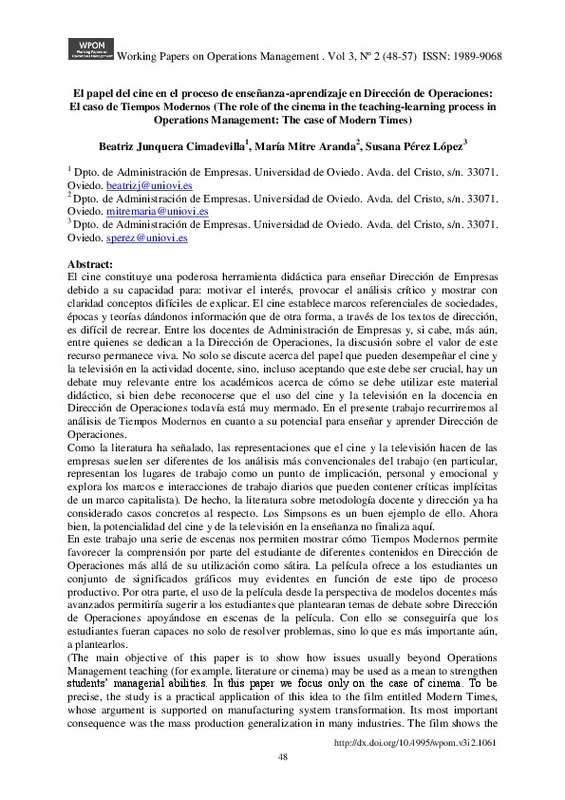JavaScript is disabled for your browser. Some features of this site may not work without it.
Buscar en RiuNet
Listar
Mi cuenta
Estadísticas
Ayuda RiuNet
Admin. UPV
Desde el lunes 3 y hasta el jueves 20 de marzo, RiuNet funcionará en modo de solo lectura a causa de su actualización a una nueva versión.
El papel del cine en el proceso de enseñanza-aprendizaje en Dirección de Operaciones: El caso de Tiempos Modernos
Mostrar el registro completo del ítem
Junquera Cimadevilla, B.; Aranda, MM.; Perez Lopez, S. (2012). El papel del cine en el proceso de enseñanza-aprendizaje en Dirección de Operaciones: El caso de Tiempos Modernos. Working Papers on Operations Management. 3(2):48-57. https://doi.org/10.4995/wpom.v3i2.1061
Por favor, use este identificador para citar o enlazar este ítem: http://hdl.handle.net/10251/18400
Ficheros en el ítem
Metadatos del ítem
| Título: | El papel del cine en el proceso de enseñanza-aprendizaje en Dirección de Operaciones: El caso de Tiempos Modernos | |
| Otro titulo: |
|
|
| Autor: | Junquera Cimadevilla, Beatriz Aranda, María Mitre Perez Lopez, Susana | |
| Fecha difusión: |
|
|
| Resumen: |
[EN] The main objective of this paper is to show how issues usually beyond Operations Management teaching (for example, literature or cinema) may be used as a mean to strengthen students¿ managerial abilities. In this paper ...[+]
[ES] El cine constituye una poderosa herramienta didáctica para enseñar dirección de empresas debido a su capacidad para: motivar el interés, provocar el análisis crítico y mostrar con claridad conceptos difíciles de ...[+]
|
|
| Palabras clave: |
|
|
| Derechos de uso: | Reserva de todos los derechos | |
| Fuente: |
|
|
| DOI: |
|
|
| Editorial: |
|
|
| Versión del editor: | https://doi.org/10.4995/wpom.v3i2.1061 | |
| Código del Proyecto: |
|
|
| Agradecimientos: |
|
|
| Tipo: |
|








